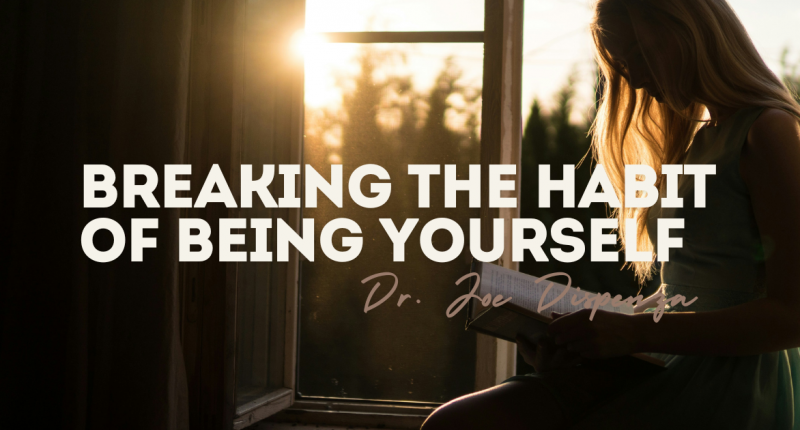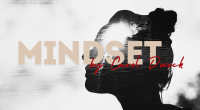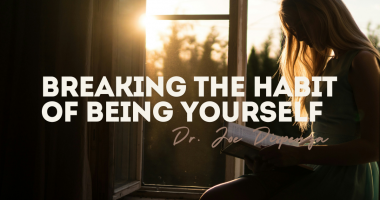Have you ever read a self-help book, felt inspired, and then… nothing changed? You know the information, you believe in the science, but somehow, you’re still stuck in the same old patterns. I’ve been there. And that’s why Chapter 10 of Breaking the Habit of Being Yourself was such a game-changer for me.
Dr. Joe Dispenza doesn’t just tell you what to do—he shows you how to do it. This chapter is all about taking action and putting the principles of the book into practice. It’s a step-by-step guide to breaking free from old habits, reprogramming your mind and body, and stepping into a new reality.
The Process of Change
Change doesn’t happen by accident. It requires a clear plan and consistent effort. Dr. Dispenza breaks it down into three main steps:
- Break Free from Old Habits:
Become aware of your thoughts, emotions, and behaviors. What patterns are holding you back? What habits are keeping you stuck? - Reprogram Your Mind and Body:
Use tools like meditation, mental rehearsal, and emotional reprogramming to create new neural pathways and train your brain to support your new identity. - Step into a New Reality:
Align your thoughts, emotions, and actions with your new identity. Practice being the person you want to become.
For me, this meant getting clear on what I wanted to change and creating a plan to make it happen. I started by identifying the habits and behaviors that were holding me back—like overthinking, self-doubt, and procrastination. And then, I started working on reprogramming my mind and body to support my new identity.
The Power of Meditation
Meditation is one of the most powerful tools for creating change. It helps you access your subconscious mind, where most of your habits and behaviors are stored, and reprogram it with new thoughts, emotions, and beliefs.
I started incorporating meditation into my daily routine. I’d sit quietly, focus on my breath, and visualize myself as the person I wanted to become. I’d connect to the emotions of confidence, focus, and control. And over time, I started to feel a shift.
At first, it was subtle. But as I continued to practice, I noticed that I was thinking differently, feeling differently, and acting differently. It was like my brain was rewiring itself to support my new identity.
Mental Rehearsal: Practice in Your Mind
Mental rehearsal is another powerful tool for creating change. It’s where you use your imagination to practice new thoughts, emotions, and behaviors. By mentally rehearsing the person you want to become, you can create new neural pathways and train your brain to support your new identity.
I started doing this every morning. I’d close my eyes and visualize myself as the person I wanted to be—calm, confident, and in control. I’d imagine how it felt to think positive thoughts, to take action instead of procrastinating, and to handle stress with ease. At first, it felt a little silly. But over time, it started to feel real.
Emotional Reprogramming
Emotions are a powerful force in shaping your brain. When you connect to positive emotions during meditation and mental rehearsal, you create new neural pathways that support your new identity.
I started incorporating emotions into my practice. Instead of just visualizing my goals, I’d connect to the emotions of achieving them. I’d feel the joy, gratitude, and confidence as if it were already happening. And over time, these emotions started to feel more real.
Consistency and Persistence
Change doesn’t happen overnight. It takes consistent practice to rewire your brain and create new habits. And there will be days when it feels hard—when old habits pull you back, and you feel like giving up.
I’ll be honest—there were days when I didn’t feel like meditating or practicing my new behaviors. But I reminded myself that every time I practiced, I was strengthening my new neural pathways. And over time, those pathways became stronger than the old ones.
Change is a Journey
Change is a journey, not a destination. It’s not about flipping a switch and becoming a new person overnight. It’s about taking small, consistent steps toward the person you want to become.
I’ll be honest—there were days when I felt like I wasn’t making progress. Old habits would creep back in, and I’d feel frustrated. But I reminded myself that change is a process. Every time I practiced, I was strengthening my new neural pathways. And over time, those pathways became stronger than the old ones.
You Are the Creator of Your Reality
Dr. Dispenza reminds us that we’re not just passive observers of our lives—we’re active creators. Our thoughts, emotions, and actions shape our reality. And by aligning them with our new identity, we can manifest the life we want.
This was a powerful reminder for me. I realized that I had been waiting for external circumstances to change before I could be happy or successful. But the truth is, I had the power to change my internal state—and in doing so, change my external reality.
Alignment is Essential
To create the reality you want, you need to align your thoughts, emotions, and actions with your new identity. When you’re in a state of coherence, you’re more likely to manifest your desires.
For me, this meant getting clear on what I wanted and aligning my thoughts and emotions with that intention. I started focusing on the emotions of joy, gratitude, and confidence, and I took actions that supported my new identity. And over time, I started to see small changes in my reality.
Take Action
Knowledge alone isn’t enough. To create real, lasting change, you need to take action. Dr. Dispenza encourages readers to step into their power and take responsibility for their lives.
For me, this meant taking small, consistent steps toward my goals. I started setting daily intentions, practicing gratitude, and taking actions that aligned with my new identity. And over time, these small steps added up to big changes.
Final Thoughts
Chapter 10 was a reminder that change is a process. It’s not about flipping a switch and becoming a new person overnight. It’s about taking consistent, intentional action to break free from old habits, reprogram your mind and body, and step into a new reality.
If you’re feeling stuck, take a moment to check in with yourself. What habits and behaviors are holding you back? And most importantly, what new thoughts, emotions, and beliefs do you want to cultivate?
Remember, you’re not just a drop in the ocean—you’re the entire ocean in a drop. And with the right tools and practice, you can create waves of change in your life.


